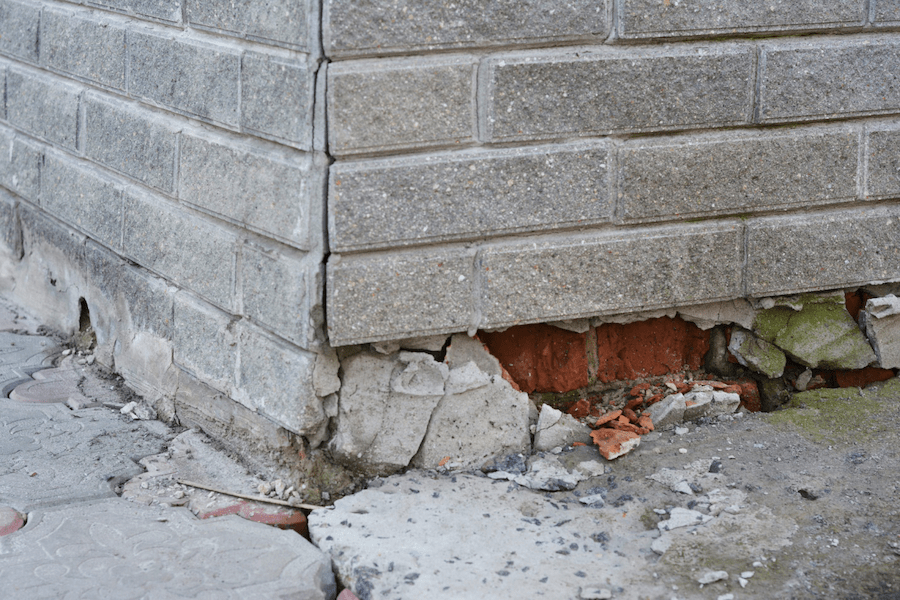Between the ages of 44 and 50, people start showing signs of wrinklesyour home works sort of the same way. After a few years, the foundation will begin to crack, thanks to environmental factors and the soil.
You don’t have much to worry about if you see a few hairline fractures here and there. The 1/10-inch deep ones are the problem. You’ll need to call a repair company about these right away.
Large foundation cracks are often the result of flooding and large plumbing leaks, but moisture isn’t the only culprit at play. Keep reading to learn the cause of cracks and find out how to avoid them.
Poor Construction
When it comes to your foundation, the construction company must use sturdy materials to build it. After all, it has the vital job of maintaining the entire structure of your home.
If the contractors use low-quality products, it could cause the entire building to fail within a few years. You’ll begin to notice more than a few small cracks.
Sometimes contractors forget to compact the soil around the structure, or they don’t install a drainage system. Both these things will lead to soil erosion, resulting in an unstable foundation.
Foundation Settlement
If your home has been freshly built, it will take three or more years to settle. When it does, you’ll notice long cracks starting at the bottom of your foundation and working their way up.
There will be no rhyme or reason for these cracks. Most of the time, they’re uneven. As your house settles, your floors will also feel a bit off.
These cracks aren’t malicious. You can call a foundation crack repair company to fill them with concrete.
Earthquakes
As you’re probably aware, earthquakes cause the ground to shake. If your foundation isn’t stable enough, it can cause cracks to form.
Even if you don’t experience a large earthquake in your area, small quakes can be enough to make tiny foundation cracks grow.
Extreme Temperature Changes
During the winter, you have to worry about frost heave. This is when the soil freezes. As it does, it shifts the ground with it, which can cause foundation cracks.
The level of damage frost heave can do varies depending on the temperature. It shouldn’t have a considerable effect if it doesn’t dip below 40 degrees.
Extreme heat is almost as bad for your foundation as the cold. During the summer, the ground will heat up and cause the material to expand.
When the temperature cools off at night, the foundation will begin to shrink back to its original size as it cools off. Over time, this natural process can be enough to cause serious damage.
The soil under and around your home will shrink when there’s a drought. It creates a gap that will allow your home foundation to shift. The lack of support will result in cracks.
Storms
Hurricanes and other extreme storms can result in flooding. That much water won’t play nicely with the structure of your house.
You see, the soil under your foundation will swell as it absorbs moisture. When it does, it will push up against your home, causing cracks.
Plumbing Leaks
It’s a good idea to have your home plumbing inspected once every two years. If you don’t, pipe leaks may go undetected. The water will have a lasting impact on your home foundation.
On top of having your plumbing inspected, you should also consider getting your basement waterproofed or investing in a sump pump. That should help keep the soil under the foundation dry and prevent cracks.
Basement Drainage System can significantly contribute to maintaining a dry basement environment, which is crucial for preventing foundation issues. These systems efficiently channel water away from the foundation, reducing hydrostatic pressure and minimizing the risk of cracks forming in the foundation over time.
Tree Roots
Mother nature can be freighting. Tree roots will grow where they want without caring about what’s in their way. That includes your home.
If the roots extend under your foundation, they’ll absorb all the moisture out of the soil. When your home settles due to the shifting earth, cracks will form.
Clogged Gutters
Having your plumbing inspected and not planting large trees near your house is only a few things you can do to avoid cracks. You should also invest in regular gutter cleaning.
Keeping your gutters clear will prevent rainwater from pooling around your home. Less moisture equals fewer splits.
You can do it yourself if you can’t afford to hire someone to clean your gutters (and you don’t mind heights). All you need is the right clothes, a kitchen spatula, a ladder, and a garden hose.
When to Worry About Foundation Cracks
Again, if your home has a few hairline cracks, these repairs can fill them up in minutes. You could even take care of the job yourself if you’re handy.
You will need to start worrying about repairing your cracked foundation if it’s followed by loose nails and bowing walls. That’s a huge indicator that the structure is about to fail.
Cracks that are over 1/10-inch thick need the attention of a professional. Large horizontal or diagonal splits spell significant damage as well.
Keep Your Home in Tip-Top Shape
As you can see, many foundation cracks result from natural occurrences. When your home settles, the structure shifts and splits. This usually causes hairline fractures that don’t pose a danger.
As time passes, the elements, plumbing leaks, clogged gutters, and rapid temperature changes can worsen small cracks. You’ll need to get the professionals involved if they’re over a certain length and width.
For more tips that will help you keep your house in tip-top shape, visit the Home & Design section of our blog.

